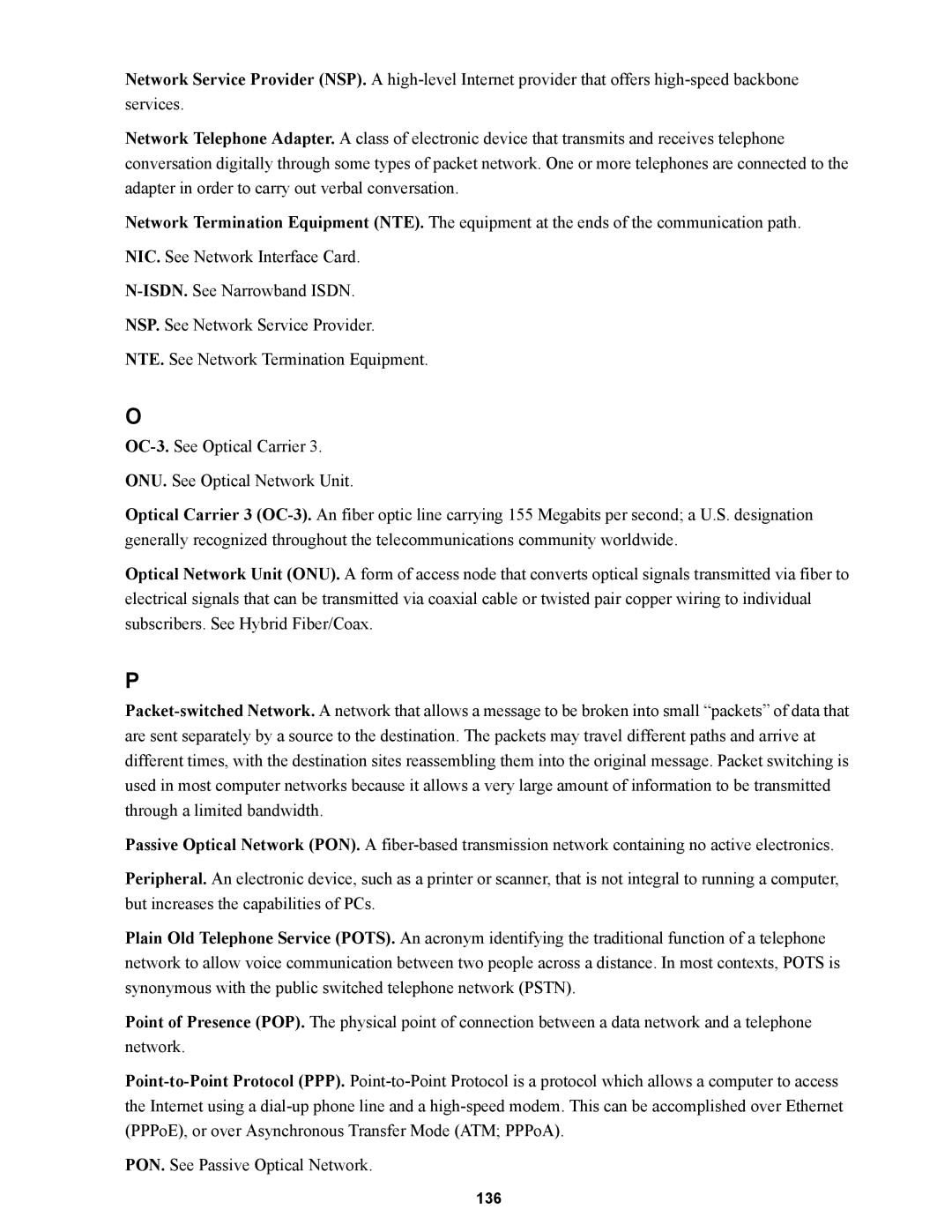Network Service Provider (NSP). A
Network Telephone Adapter. A class of electronic device that transmits and receives telephone conversation digitally through some types of packet network. One or more telephones are connected to the adapter in order to carry out verbal conversation.
Network Termination Equipment (NTE). The equipment at the ends of the communication path.
NIC. See Network Interface Card.
NSP. See Network Service Provider.
NTE. See Network Termination Equipment.
O
ONU. See Optical Network Unit.
Optical Carrier 3
Optical Network Unit (ONU). A form of access node that converts optical signals transmitted via fiber to electrical signals that can be transmitted via coaxial cable or twisted pair copper wiring to individual subscribers. See Hybrid Fiber/Coax.
P
Passive Optical Network (PON). A
Peripheral. An electronic device, such as a printer or scanner, that is not integral to running a computer, but increases the capabilities of PCs.
Plain Old Telephone Service (POTS). An acronym identifying the traditional function of a telephone network to allow voice communication between two people across a distance. In most contexts, POTS is synonymous with the public switched telephone network (PSTN).
Point of Presence (POP). The physical point of connection between a data network and a telephone network.
PON. See Passive Optical Network.
